organizational culture
The Pivotal Question in Leadership Conversations: Personal Well-being Checks

Photo by Emily Underworld on Unsplash
Building a sustainable organizational culture often depends on one pivotal question: “How are you doing personally?” Leaders might grapple with daily responsibilities, from the next shiny new PropTech innovation to systems optimization. Yet, the heart of an organization, its culture, thrives on a foundation built from genuine human connection
Any leader can direct a meeting, set targets, or chart strategies. But to mold a culture of trust, understanding, and motivation, it’s imperative to prioritize the personal well-being of each team member.
Starting one-on-one conversations with this seemingly simple question goes beyond conventional leadership practices. It signals that you regard the individual before their role in your organization. For leaders who champion human-centric leadership, this approach resonates with the belief that when individuals feel valued and understood, they naturally align with the organization’s objectives.
While it’s tempting to dive directly into project updates or performance metrics during one-on-ones, initiating a personal check-in achieves two critical objectives. First, it establishes a safe space. When faced with challenges outside of work, many people can find their performance and motivation impacted. By understanding these external factors, leaders can offer support, flexibility, or resources, creating an environment where individuals feel supported professionally and personally.
Secondly, it fosters a culture of vulnerability and authenticity. In an era where authenticity is paramount, team members yearn for the leadership they can connect with, not just report to. By broaching personal topics, leaders demonstrate vulnerability, setting the stage for open, honest, and constructive dialogues.
This doesn’t suggest that every conversation must delve deep into personal territories. The intent isn’t to pry but to offer an avenue for expression. Even if a team member chooses to keep things professional, asking underscores their well-being is a priority.
Such conversations remind everyone that the human element remains irreplaceable amidst the whirlwind of progress and innovation.
This may appear contrarian to many, especially when time is of the essence, and there are pressing matters to address. However, the long-term dividends of such an approach in terms of team cohesion, loyalty, and motivation can be game-changing.
The essence of human-centric leadership lies in recognizing the profound impact of personal well-being on professional performance. As leaders in multifamily look to tease out human potential and craft thriving organizational cultures, the question, “How are you doing personally?” could be the most transformative one they ask.
Share this:
Cultivating a No-Gossip Culture for Stronger Multifamily Leadership

Photo by Ben White on Unsplash
In every industry, the foundation for a thriving organization lies in a cohesive and trust-based culture. One of the corrosive elements that can undermine this foundation is gossip. Eliminating gossip fosters a positive environment and reinforces the pillars of trust, integrity, and transparency, which are paramount for any leader aspiring to tease out human potential.
Gossip, often framed as harmless chatter, can have repercussions beyond the initial whispers. Not only does it contribute to a divisive workplace, but it can also stifle innovation, hinder collaboration, and drain morale. Leaders committed to human-centric leadership recognize these challenges and understand the need to foster open lines of communication, ensuring everyone feels heard, respected, and valued.
The multifamily industry’s intricacies and fast-paced nature necessitates strong teamwork and collaboration. It’s a space where decisions made by leaders affect not just teams within the company but also countless individuals who call our properties home. Thus, allowing gossip to persist can lead to significant disruptions within the team dynamics and the company’s external reputation and relationships.
So, how can leaders tackle this issue proactively?
Foster Open Communication: Leaders can emphasize the importance of open and direct communication. This means creating an environment where concerns are addressed head-on without resorting to behind-the-scenes discussions. Regular feedback sessions, town hall meetings, or open-door policies can be effective tools.
Lead by Example: As leaders, your actions set the tone. You send a clear message about your organization’s values by showcasing a behavior that shuns gossip and promotes constructive discussions.
Training and Workshops: Consider organizing workshops on effective communication, conflict resolution, and interpersonal relationships. Equip your teams with the skills to communicate without resorting to gossip.
Consequences for Persistent Offenders: While fostering a culture of understanding is essential, leaders should also make it clear that gossip will not be tolerated. This can range from formal reprimands to corrective actions for those continually engaging in destructive behavior.
Resources:
The 15 Commitments to Conscious Leadership.
Share this:
Reviving Organizational Pulse: The Risk Imperative

Photo by Cristofer Maximilian on Unsplash
In an age where rapid tech advancements, swift paradigm shifts, and risk-taking define the business landscape, the words of Elon Musk strike an almost haunting chord. “This is how civilizations decline. They quit taking risks. And when they quit taking risks, their arteries harden. Every year, there are more referees and fewer doers. When you’ve had success for too long, you lose the desire to take risks.”
If we distill this sentiment, it cautions against the dangers of complacency and underscores the inherent value of risk-taking in organizational growth. As leaders in the multifamily space, the resonance is palpable. Here’s why.
The absence of risk can spell stagnation. Historical success, while validating, can often blind one to the changing needs and evolving paradigms of the industry. The more we nestle in our comfort zones, banking on tried and tested methods, the more we stand to lose touch with the ever-changing reality of business.
Musk’s mention of “more referees and fewer doers” is particularly compelling. We are often mired in layers of bureaucracy of our own making. While governance and oversight are crucial, an overemphasis can stifle innovation. If every novel idea must pass through an exhaustive series of approvals, the spirit of entrepreneurship within the organization diminishes. Those passionate “doers” find their energies curbed, their innovations quelled. We must think about freedom within a framework to ensure we don’t stall the organization.
Human-centric leadership thrives on understanding people’s aspirations, challenges, and needs. It’s about intuiting future trends, predicting shifts in consumer behavior, and acting on these insights with agility. This requires the courage to take risks and the vision to see where these risks could lead. We must have the freedom to think and, more importantly, act. We must be open to change.
Yet, to drive this change, leaders must foster a culture that celebrates risk. This doesn’t mean recklessness but rather a calculated approach to innovation, where the potential for growth and the impact on the human experience are at the forefront of decision-making. Organizations should be sanctuaries for creative thought, where the fear of failure doesn’t overshadow the thrill of the possible. In a former life, we were governed by a value that fits this thought – Take Educated Risks.
While stability and consistency have their merits, the true advancement of any organization or leader lies in embracing risk. In that risk lies the promise of growth and novel ways of doing things. As multifamily leaders, let us not be content with past glories. Instead, let’s seize the future, one risk at a time.
Share this:
Trust as the Pillar: Building a Stellar Culture

Culture isn’t just a buzzword—it’s the lifeblood that fuels an organization’s success. If trust is the heartbeat of this culture, then every business interaction is its pulse.
Now, why is trust so monumental in this space? First, let’s delineate trust. Trust is the assured reliance on someone’s character, ability, strength, or truth. The adhesive binds leaders with their teams, stakeholders, and even competitors. But in the multifamily leadership landscape, it goes beyond just interpersonal dynamics.
- Trust and Decision Making: Leaders who exhibit trustworthiness encourage the collective to make decisions confidently. Trust expedites processes in multifamily management with its myriad of contracts, deals, and partnerships. No second-guessing, no time wasted in verification—a culture of trust fast-tracks success.
- Trust Amplifies Brand Reputation: In a market as competitive as real estate and property management, brand reputation can make or break a company. And guess what lies at the foundation of a strong brand? Trust. When your brand is trusted, word-of-mouth referrals increase, and so does brand loyalty. This is not mere speculation; numerous studies have affirmed the direct correlation between trust and brand strength.
- Trust Engenders Innovation: Contrarian as it might sound, trust can be a breeding ground for innovation. When multifamily leaders trust their teams, it fosters an environment where new ideas are not just encouraged but celebrated. In a domain consistently influenced by PropTech and RentTech advancements, a culture of trust becomes the catalyst for disruptive innovation.
- Trust Mitigates Risk: While discussing safety might often be redundant, it’s vital in the context of trust. Trust reduces financial risks in an industry where significant capital is at stake with every decision. When leaders trust their teams and vice versa, it diminishes the chances of costly mistakes.
How, then, do multifamily leaders cultivate this trust? Through consistency, transparency, effective communication, and by valuing every individual’s contribution, irrespective of their role. However, building trust is not a one-time effort; it demands continual nourishment.
To those in multifamily leadership: envision a future where your organization isn’t just known for its properties or profits, but for its extraordinary culture of trust. Such an organization doesn’t just thrive; it leads, transforms, and sets benchmarks.
Share this:
Elevating Multifamily Leadership: The Constructive Power of Healthy Conflict in Business Growth

Photo by jean wimmerlin on Unsplash
Harmony is often held on a pedestal when thinking about leadership. But what if the path to optimal business growth lies in embracing, not evading, conflict? Not the destructive kind, but conflict rooted in mutual respect and a shared vision for success. I like to call it arguing, fussing, fighting, and attacking issues, not humans.
Healthy conflict is not an oxymoron but a potent tool for innovation. It challenges the status quo, pushing businesses to think about and address unforeseen challenges. As multifamily professionals, we pride ourselves on creating spaces that foster community. In the same vein, cultivating an environment where diverse opinions are heard and valued can bring your team closer and set the stage for a culture of learning.
- Diverse Perspectives Fuel Innovation: In any multifamily business, many voices bring many ideas. When there’s room for constructive disagreement, new solutions emerge that single-minded approaches could easily overlook.
- Redefining Organizational Culture: Leaders in the multifamily industry have a deep understanding of the value and purpose of cultivating community. Actively demonstrating that conflict can coexist with camaraderie sets a precedent for an organizational culture that values authenticity and open dialogue.
- Facilitating Personal and Professional Growth: Encountering and navigating disagreements can be a transformative experience. It fine-tunes problem-solving skills, fosters resilience, and encourages a culture of continuous learning.
- Driving Long-term Sustainability: By embracing and practicing healthy conflict, businesses stay agile. It prepares the organization to pivot, adapt, and evolve, which are essential attributes in an industry as dynamic as ours.
Now, let me be clear: it’s vital to distinguish between healthy and unhealthy conflict. The former thrives on mutual respect, active listening, and solution-oriented discussions. The latter all too often devolves into personal attacks and unproductive discourse. To truly harness the power of positive conflict, multifamily leaders must ensure a foundation of trust and clarity of purpose.
In the words of Margaret Heffernan, “For good ideas and true innovation, you need human interaction, conflict, argument, and debate.” Integrating healthy conflict into our business strategies can usher in growth while maintaining a human-centric focus.

